
Renault Clio (2024-) Review

Introduction
With the Ford Fiesta now discontinued, the fight is on to become the top dog in the small hatchback market. So it’s the perfect time for Renault to update its popular little Clio with some fresh styling and some extra tech, consolidating all the more minor updates that have taken place in recent years.
It’s a story of continuous evolution, rather than wholesale changes, but that doesn’t mean nothing has changed.
Over the past year or so, the Clio has been refreshed to include a new-look engine range that combines an updated hybrid powertrain with a small, turbocharged petrol engine, and tweaks that have ensured the Clio remains fun to drive. But now the ante has been well and truly upped with a new nose and a new Esprit Alpine trim level that leverages sister brand Alpine’s F1 know-how. The question is, will that be enough to see it rise to the top?
Select's rating score* - 4.3 / 5
At a Glance
Compared with the old Clio, the new model doesn’t look all that different. Yes, Renault’s stripy new logo takes pride of place on the nose, and there’s a new-look grille, but that’s about your lot. Unless, of course, you opt for the new Esprit Alpine trim level, with its Alpine badging on the wheels and wings, as well as the sportier bumpers and wheel designs.
Inside, meanwhile, there’s a slightly more high-tech cabin with a digital instrument display as standard, and the central touchscreen infotainment system is available with a few extra features. Again, the Esprit Alpine hogs most of the limelight, with its sportier cabin including flash upholstery and red, white and blue stitching.
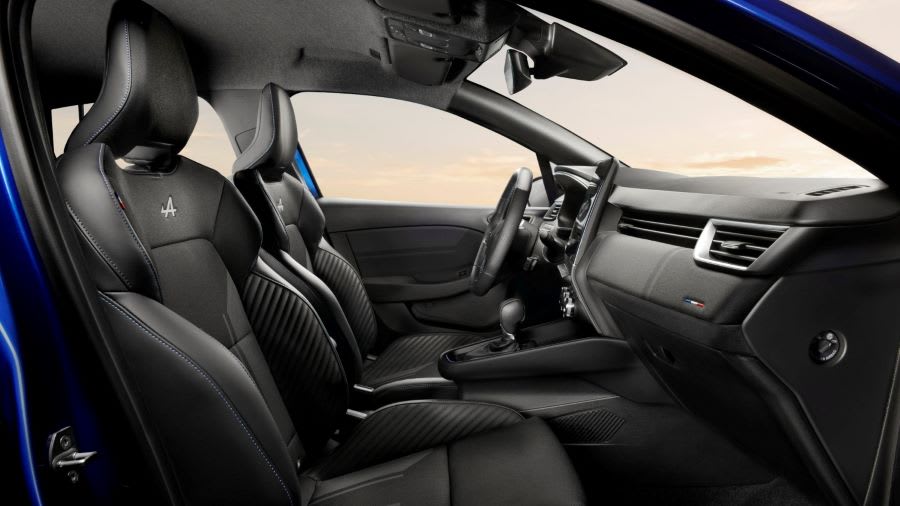
Up front, the Clio is offered with the same engine range as before, with the little TCe 90 petrol engine joined by the E-Tech 145 Full Hybrid option. Both are powered by petrol, but the E-Tech supplements the 1.6-litre engine with the same electric motor and six-speed automatic gearbox as the Captur and Arkana SUVs.
And although Renault has made some changes to the car’s specification, there’s no change in terms of suspension or chassis. All of which means the Clio is just as fun to drive as before, with some of the best handling characteristics of any car in this class, while the ride is still mature and supple.
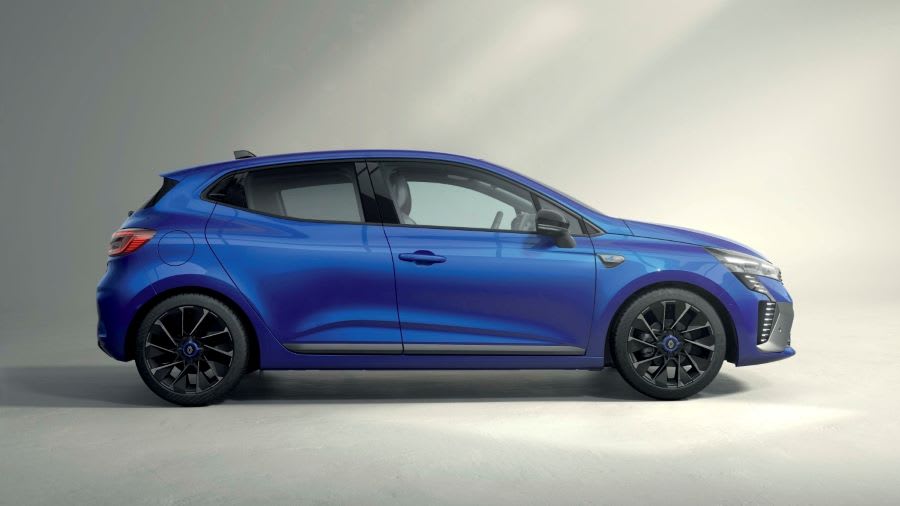
Key Features
For Clio customers, four things will seal the deal. The first of these is the style, which is cleaner and more modern than before, with a chic, cool image. The Clio has often been among the best-looking cars in its class, and the latest version is no different.
Then there’s the space inside. The Clio has a huge boot compared with most of its rivals, and it can compete with considerably larger cars, too. Admittedly, rear passenger space is only adequate, but for those who are more likely to carry luggage than three passengers, the Clio will prove immensely practical.
It’ll feel smart, too, with some premium cabin materials and solid build quality. And it’s great fun to drive, with impressive agility and punchy, efficient engine options making it more enjoyable than most on your favourite country road.
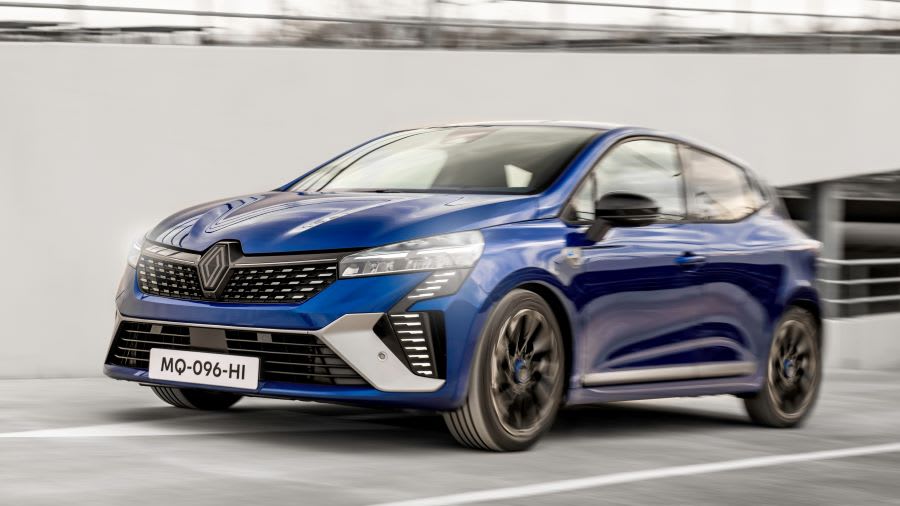
Performance & Drive
Clio customers get a straight choice of two different engines, with the basic 1.0-litre TCe 90 turbocharged petrol engine sending 95hp to the front wheels through a six-speed manual gearbox, while the 1.6-litre E-Tech Full Hybrid offers 143hp and a six-speed automatic transmission.
For many, the hybrid will be an appealing option, thanks to its combination of performance and economy, which allows for a respectable, if not especially rapid, 9.3-second dash from 0-62mph. Opt for the TCe 90, and that time grows into double figures, although 12.2 seconds still isn’t too sluggish.
Whichever engine you choose, though, you’ll get a car that’s surprisingly enjoyable to drive. French cars are often known for their comfort, rather than their verve, but the Clio is one of the exceptions that proves the rule. It isn’t quite as sharp as the now-defunct Fiesta, but meaty steering and decent body control means it’s pretty nimble in the bends.
Of course, that comes at a cost. There’s a slightly firmer ride than you’ll find in, say, a Citroen C3, although the Clio never gets too jagged or harsh. That said, we haven’t yet tested a basic Clio with the smaller 16-inch alloy wheels, which may prove slightly more supple over potholes. For the more upmarket models, though, there’s definitely a sporty edge to the ride, even if it isn’t quite as firm as a ‘hot’ hatchback.
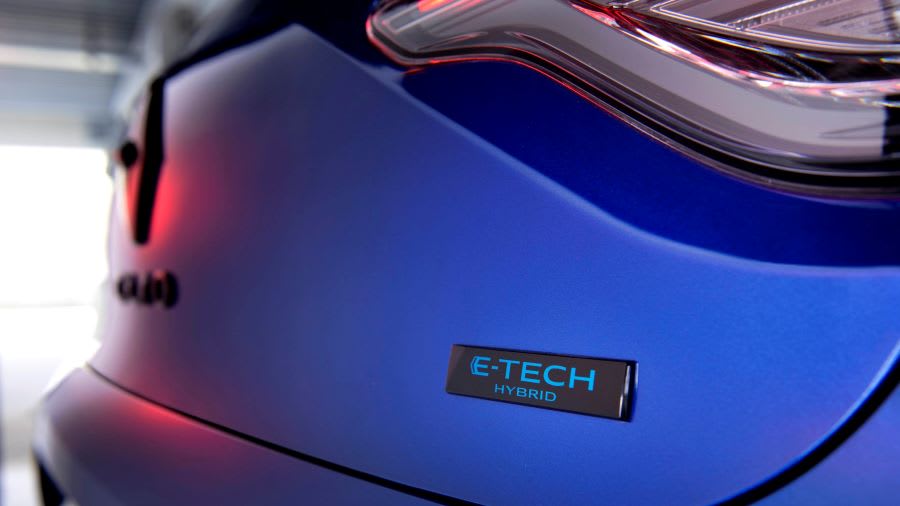
Running Costs & Emissions
In theory, at least, the E-Tech Full Hybrid should be the most wallet-friendly of the Clio models. Not only will it manage almost 70mpg on the official economy test, but it offers emissions of around 100g/km, which should keep company car tax bills to a minimum. That said, there’s no electric version of the Clio as yet, and that means a Peugeot e-208 remains a more cost-effective choice for company car drivers.
However, the fact of the matter is electric cars won’t work for everyone, and the Clio still makes a case for itself. The refined hybrid system is at its most efficient around town, but the little TCe 90 engine will still be very economical on a long run. So economical, in fact, that careful drivers should see around 50mpg on the motorway. For those regularly doing longer trips, the difference between the E-Tech and the TCe 90 might not be as great as the figures suggest.
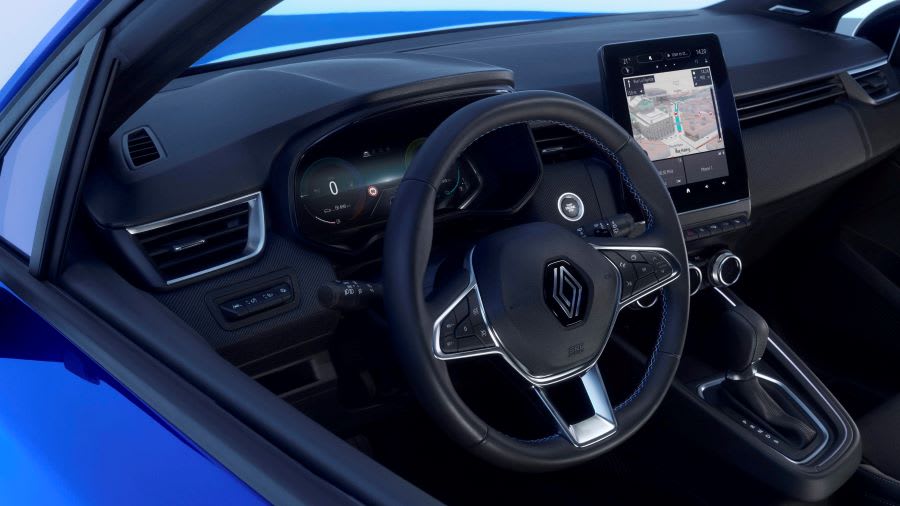
Interior & Technology
Renault has done a little work on the Clio’s cabin, but the basic structure is still the same. That means there’s a clean dashboard design, dominated by a central touchscreen and a digital instrument display, which is now a standard feature on every model. Admittedly, the size of the screen and the instrument display will change depending on the version you choose, but they’re more or less variations on a theme.
Naturally, though, the top-spec cars with their larger touchscreens and snazzier instrument clusters are the most sophisticated. The touchscreen tech is little better than average, although the screen is quite crisp, and you get the Android Auto and Apple CarPlay tech to make life a bit easier, but the high-end instrument display is the highlight. It doesn’t have the clever functions of some competitor systems, but it does have a clear and configurable display that gives you all the information you need.
As with so many other cars in this class, the Clio’s profit margins are tight to say the least, so a degree of cost-cutting is to be expected. But the upmarket materials and simple solutions in the Clio’s cabin ensure none of that is too intrusive, and you won’t feel let down by the occasional scratchy plastic.
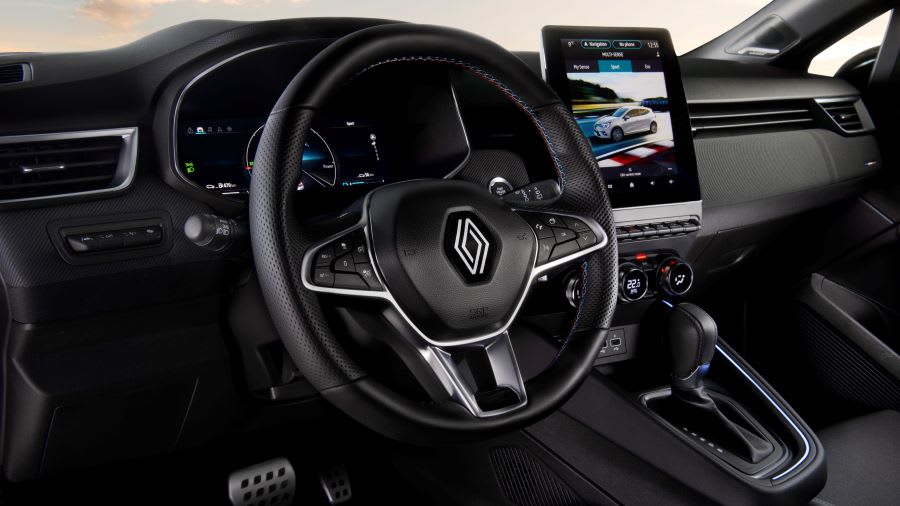
Practicality & Boot Space
One of the Clio’s biggest draws is its plentiful boot space. In TCe 90 form, the little Renault has a 391-litre boot, which is not just bigger than that of a VW Polo or a Seat Ibiza, but it’s roomier than the cargo bay in a much larger Volkswagen Golf. Admittedly, some versions of the Clio only offer 301 litres of luggage space, but that’s still up there with the old Ford Fiesta, so it’s hardly paltry.
The competitively sized boot comes at a small price. Rear passenger space is adequate, rather than ample, and though you can sit four adults in there, taller passengers won’t want to spend too long in the back seats. Kids will be fine, though, and the central seat in the rear bench is remarkably comfortable, albeit a little short on space for shoulders and legs.
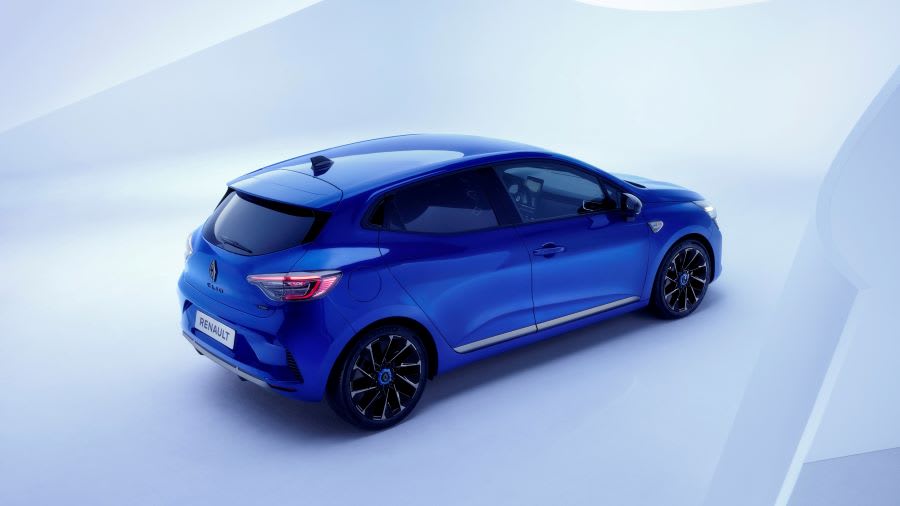
Safety
Structurally speaking, the new Clio is exactly the same as its predecessor, so it inherits that car’s five-star Euro NCAP crash test rating. And for a small car, it’s a very solid five-star rating indeed, with a staggering 96% score for adult occupant protection and a very commendable 89% score for child occupant protection. That puts it roughly on a par with the famously very safe Volvo XC90 seven-seat SUV, which gives you some idea of just how safe this car is.
And to prevent accidents from happening in the first place, the Clio has a suite of safety systems. As standard, all models get rear parking sensors, while a rear-view camera and front parking sensors are offered on more upmarket models. Naturally, there are other safety systems, too, including autonomous emergency braking that can automatically stop or slow the car if the driver fails to respond to a hazard.
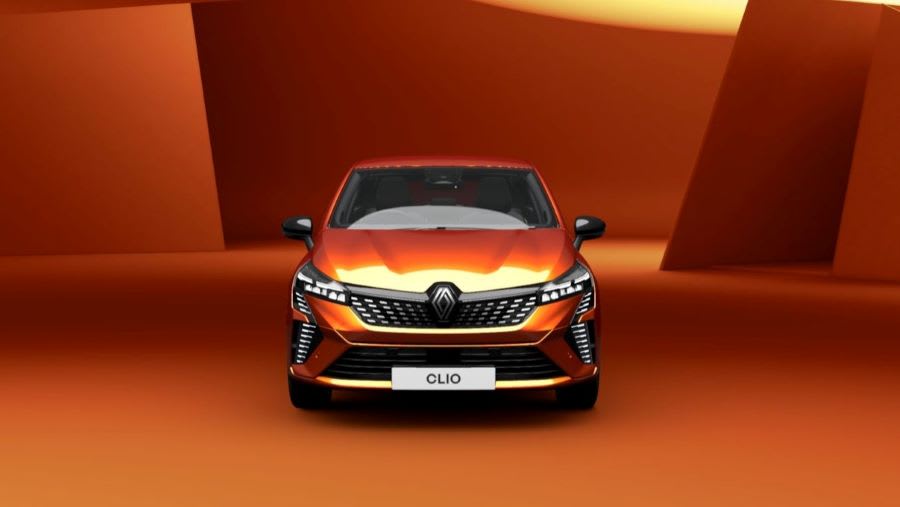
Options
Clio customers face a simple choice of three different trim levels, with the entry level Evolution model kicking things off. That car comes with 16-inch alloys and climate control, as well as rear parking sensors and a seven-inch digital instrument cluster, plus a seven-inch touchscreen.
Upgrading to the mid-range Techno gets you larger alloys and some more chrome detailing on the exterior, not to mention a wireless charging pad, front parking sensors and a rear-view camera. But the Esprit Alpine is the range-topper, offering the sportier bodywork, a heated steering wheel and heated seats, in addition to the most impressive 9.3-inch touchscreen and a larger 10-inch instrument display with satellite navigation.
As usual, there’s a selection of options, including a range of paint colours, but we don’t expect to see too many choices on the list. Renault will, however, offer accessories such as floor mats and boot liners, just to make living with the Clio that fraction easier and more comfortable.
.jpg)
Rival Cars
The Clio is up against some cracking small cars, but its task has become easier thanks to the demise of the undisputed king of the hill, the Ford Fiesta. With that fabulous little hatchback out of the way, it’s up to the rest of them to fight for a place at the top of the tree. And naturally, the competition is fierce.
Among the front runners – at least with customers – is the Vauxhall Corsa (above), which is vaunted for its looks and choice of petrol or electric power, but is far from the best car in the class. A better contender is the Peugeot 208, which is one of Europe’s best-selling cars, as well as being one of the best designed. Comfortable and cool, it’s an appealing choice.
Elsewhere, there’s the hybrid-powered Toyota Yaris, the Mazda2 and the Skoda Fabia, all of which are efficient and well built, as well as being good to drive. Or you could go for the ever-popular Seat Ibiza or Volkswagen Polo, both of which are closely related but have slightly different characters.
Other popular choices include the Hyundai i20 and the Kia Rio, which are also closely related, and offer impressive quality at a competitive price, as well as promising solid reliability. But the leader in the reliability stakes is Honda, which makes the comfortable, spacious and efficient Jazz.
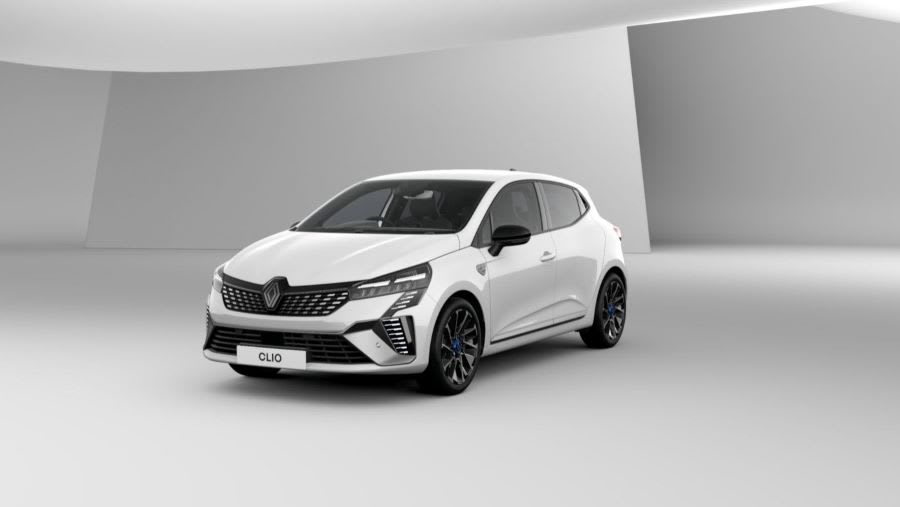
Verdict & Next Steps
Although it’s an evolution of its predecessor, rather than an all-new car, the Clio remains one of the most appealing and likeable small cars on the market.
Interior quality is surprisingly good, and there’s no arguing with the boot space, but the best thing is the way this car drives. It’s fun to throw around and it’s easy to steer around town, while the peppy petrol and hybrid powertrains give it more than enough get-up-and-go.
The Clio is up against some serious competition in a crowded class, but it’s one of our favourites.
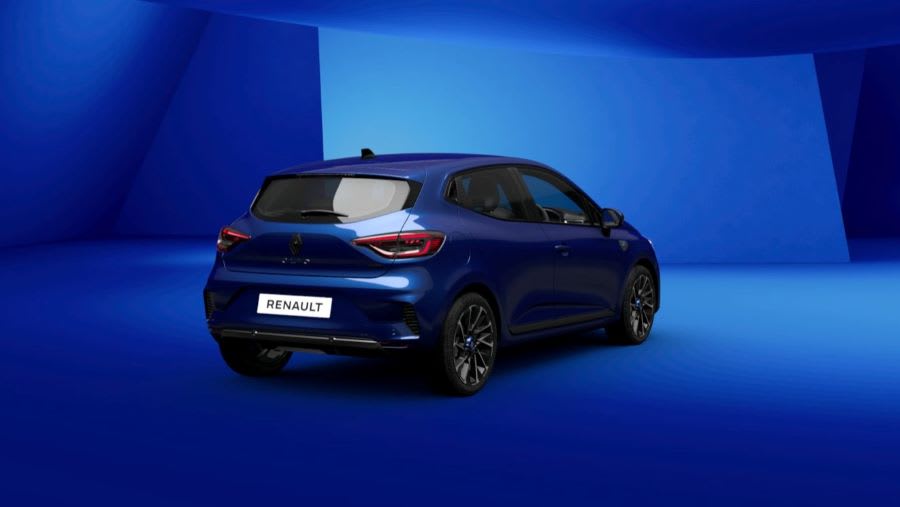
Where to next?
View latest Renault Clio Deals - from just £206.39 per month inc VAT**.
Call us on 0118 3048 688 or hit the green 'Enquire' button for more details.
Looking for a great leasing deal? Check out our incredible range of car lease deals.
New SUV? Read our latest Car Reviews and find the right model for you.
Want to know more about leasing? Take a look at our comprehensive Leasing Guides.
Interested in everything motoring? Why not catch up on all the latest Car Leasing News.
**Score based on Select’s unique meta score analysis, taking into account the UK’s top leading independent car website reviews of the Renault Clio
**Correct as of 03/08/2023. Based on 9 months initial payment, 5,000 miles over a 48 month lease. Initial payment equivalent to 9 monthly payments or £1,857.51 (Plus admin fee) Ts and Cs apply. Credit is subject to status.
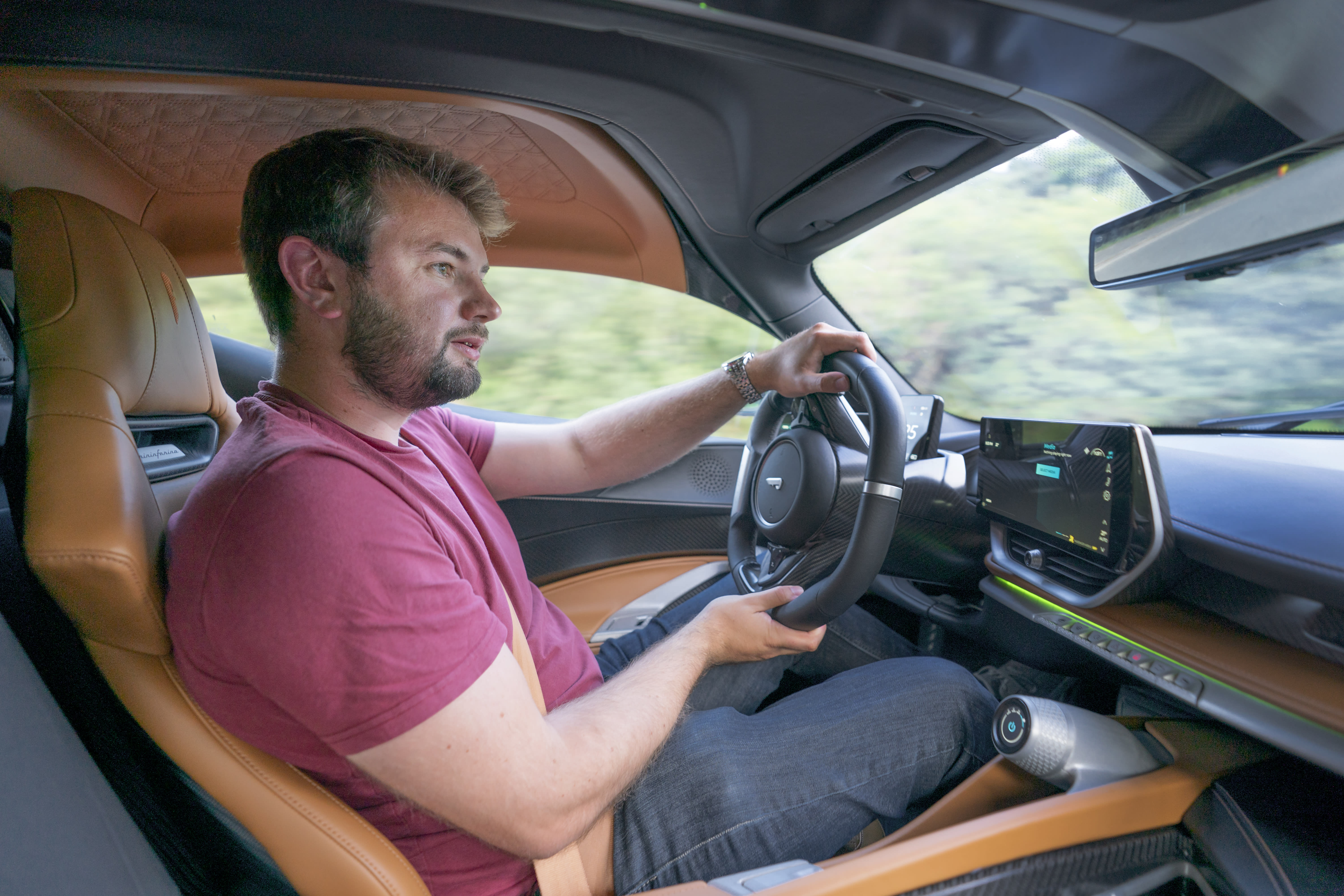
.jpg)


















